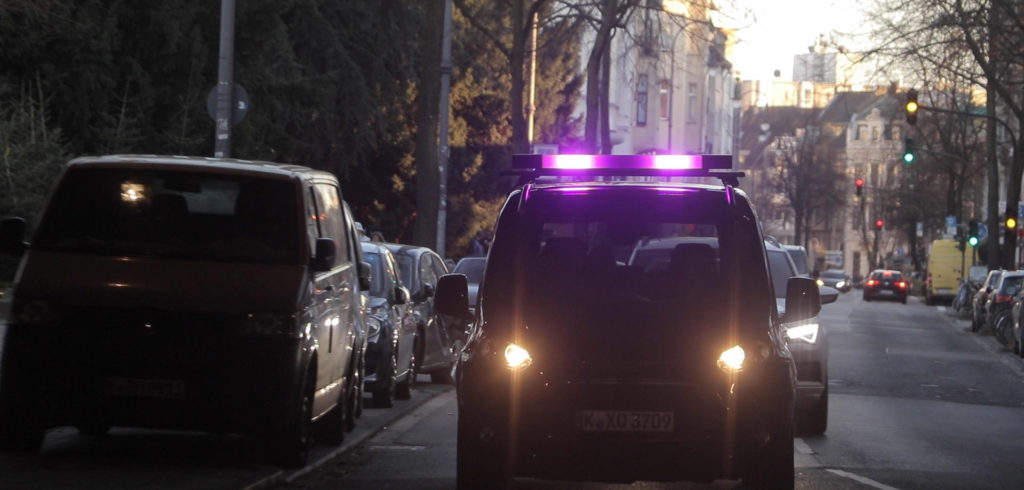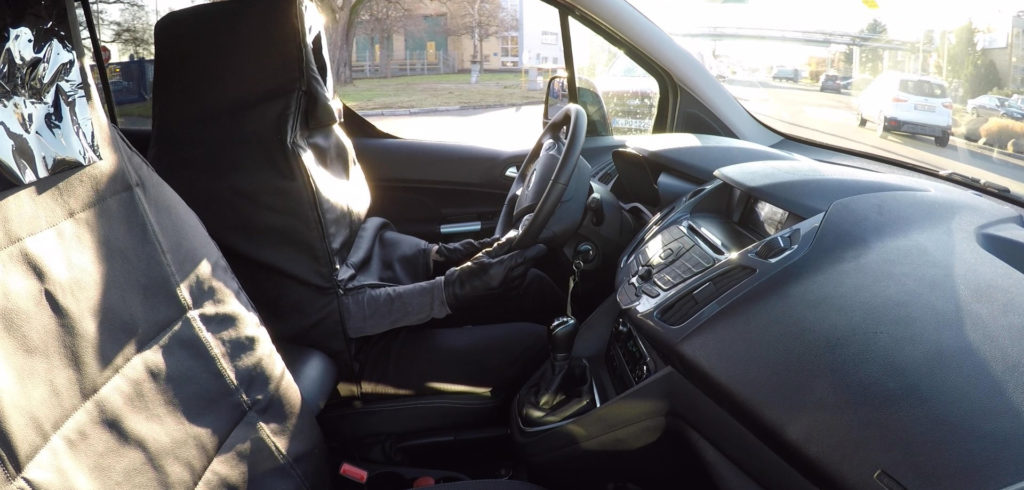Motorists have long used hand gestures and eye contact to communicate with other road users and pedestrians. However, for when vehicles of the future have no human driver, Ford has developed a light-based system to indicate what the vehicle is doing.
Using colored lights mounted above the windshield of a Ford Transit Connect van, the car maker trialled how pedestrians would respond and react to the ‘driverless’ vehicle, which actually had a human operator hidden in the driver’s seat.
The light bar flashed a series of colors – white, purple, and turquoise – to indicate when the van was driving, about to pull away or stopping to give way. The driver hidden in the ‘human car seat’ was able to effectively gauge the responses of pedestrians, cyclists and other road users.
The tests revealed that turquoise was the color people reacted to the most as it was more noticeable than white and confused less with red than purple.
“Fundamentally, people need to trust autonomous vehicles and developing one universal visual means of communication is a key to that. Turning someone into a ‘Human Car Seat’ was one of those ideas when there was a bit of a pause and then the realization that this was absolutely the best and most effective way of finding out what we needed to know,” said Thorsten Warwel, Ford of Europe core lighting manager.
Ford is working toward the goal of delivering its first self-driving car to North America by 2021 so ensuring the public trusts and can safely understand what an autonomous vehicle will do is essential.
Further tests to Ford’s lighting system have been carried out in the USA as well as Germany at Chemnitz University of Technology, in Germany, where researchers placed lights in different areas around the car including the headlamps and grille.
“Making eye contact is important – but our study showed that first and foremost road users look to see what a vehicle is doing. The next step is to look at how we can ensure the light signals are made clearer and more intuitive,” said Dr Matthias Beggiato, department of psychology, at the university.



